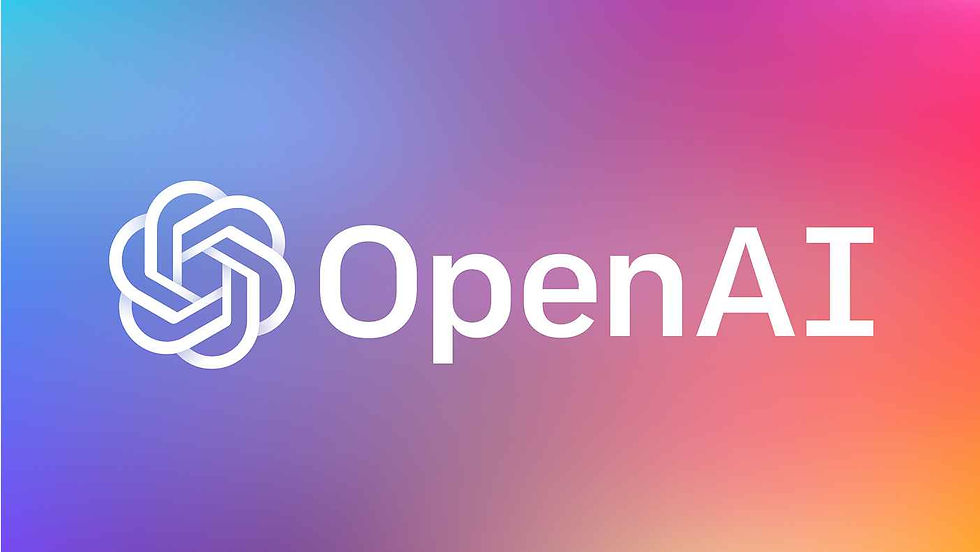Connecting Remote MCPs to OpenAI Agents
- Staff Desk
- May 14
- 6 min read
Updated: Sep 15

In the digital age, technology's integration into various fields is becoming more commonplace and necessary. One such exciting development is the connection of remote Multi-Channel Processors (MCPs) to OpenAI agents. This integration opens a world of possibilities, enhancing efficiency and intelligence in operations. The following guide will delve into understanding intelligent agents, the process of connecting remote MCPs to OpenAI agents, and the myriad benefits this integration offers.
Understanding Intelligent Agents
Intelligent agents are at the heart of modern AI technologies, capable of perceiving their environment and making decisions to achieve specific goals. These agents use artificial intelligence to process vast amounts of data and make autonomous decisions. Their sophistication allows them to not only learn from their environment but also adapt to changes and improve performance over time.
Characteristics of Intelligent Agents
Intelligent agents possess several key characteristics that enable them to function effectively. They can perceive their environment through sensors and act upon that environment through actuators. Their ability to reason and learn from interactions is what sets them apart from traditional computing systems. This learning capability allows them to improve their decision-making processes over time, leading to more efficient operations.
Types of Intelligent Agents
There are various types of intelligent agents, each serving distinct functions and possessing varying levels of complexity. Simple reactive agents operate on a condition-action basis, responding to environmental stimuli without maintaining any internal state. In contrast, more complex learning agents can adapt their behavior based on past experiences, utilizing sophisticated machine learning algorithms. OpenAI agents, for instance, represent some of the most advanced types, employing deep learning techniques to process information and interact intelligently with their environment.
Applications of Intelligent Agents
Intelligent agents find applications in numerous fields, from autonomous vehicles to personalized online recommendations. In healthcare, they assist in diagnosing diseases and suggesting treatments. In finance, they analyze market trends and execute trades autonomously. The versatility of intelligent agents makes them invaluable in any domain requiring data-driven decision-making, enhancing efficiency and accuracy across various industries.
What Are Remote MCPs?

Multi-Channel Processors (MCPs) are specialized devices designed to handle multiple data streams simultaneously. They are crucial in environments that require processing large volumes of data from various sources. Remote MCPs, as their name suggests, are located off-site yet remain integral to processing tasks, especially in distributed networks.
The Role of MCPs in Data Processing
MCPs play a vital role in data processing by managing and directing data flow across different channels. They ensure efficient data processing and minimize potential bottlenecks. By connecting these processors remotely, organizations can leverage the advantages of cloud computing and distributed networks, optimizing data management and processing capabilities.
Advantages of Remote MCPs
Remote MCPs offer several advantages over traditional on-site processors. They enable organizations to process data closer to its source, reducing latency and improving response times. This distributed approach also enhances scalability, as organizations can add or remove processing capabilities without major infrastructure changes. Moreover, remote MCPs can significantly reduce operational costs by utilizing cloud resources efficiently.
Challenges in Deploying Remote MCPs
Despite their benefits, deploying remote MCPs comes with challenges. Ensuring reliable and secure data transmission between remote sites is paramount. Organizations must also manage the complexity of integrating remote MCPs with existing systems and networks. Addressing these challenges requires careful planning and the implementation of robust security measures to safeguard data integrity and privacy.
SynergyLabs and Their Role
SynergyLabs is at the forefront of integrating remote MCPs with OpenAI agents. By leveraging cutting-edge technology, SynergyLabs ensures seamless communication and operation between these systems. Their expertise in both MCPs and AI agents uniquely positions them to facilitate this integration effectively.
Expertise and Innovation at SynergyLabs
SynergyLabs is renowned for its innovation and expertise in the field of AI and data processing. Their team of experts continually explores new technologies and methodologies to enhance system performance. This commitment to innovation ensures that their solutions are always at the cutting edge, offering clients the best possible outcomes in their integration projects.
Why Choose SynergyLabs?
SynergyLabs offers a comprehensive suite of services supporting the integration of MCPs with OpenAI agents. Their solutions are tailored to meet the specific needs of businesses, ensuring that the technology aligns seamlessly with operational goals. Additionally, their support and expertise help mitigate potential challenges during the integration process, providing clients with peace of mind and confidence in their systems.
Case Studies and Success Stories
SynergyLabs has a proven track record of successful integrations across various industries. Case studies highlight their ability to enhance operational efficiency and data processing capabilities for clients. These success stories demonstrate the tangible benefits of integrating remote MCPs with intelligent agents, showcasing SynergyLabs as a leader in this transformative technology.
The Process of Connecting Remote MCPs to OpenAI Agents
Connecting remote MCPs to OpenAI agents involves several key steps. It is essential to ensure that the necessary infrastructure is in place for seamless integration.
Step 1: Assessing Infrastructure Needs
Before connecting MCPs to OpenAI agents, it is crucial to assess the existing infrastructure. This assessment helps identify any upgrades or changes needed to support the integration. Factors to consider include network capacity, data handling capabilities, and existing software compatibility, ensuring that the infrastructure can handle the increased data flow and processing demands.
Step 2: Implementing Integration Software
Software plays a vital role in connecting MCPs to OpenAI agents. The integration software facilitates communication between the two systems, ensuring that data is accurately transmitted and processed. This software must be robust and capable of handling the demands of both MCPs and intelligent agents, providing seamless integration and efficient data flow between all components.
Step 3: Testing and Optimization
Once the integration software is in place, thorough testing is necessary to ensure everything functions as expected. Testing involves verifying data flow, checking for potential errors, and ensuring that the MCPs and OpenAI agents communicate effectively. Optimization follows testing, where adjustments are made to improve performance and efficiency, ensuring that the integrated system operates at peak capacity.
Step 4: Monitoring and Maintenance
Post-integration, continuous monitoring and maintenance are crucial to ensure the system's longevity and performance. Regularly monitoring data flow and system interactions helps identify potential issues before they escalate. Maintenance involves updating software, adjusting configurations, and optimizing performance as necessary, ensuring that the integrated system remains robust and effective over time.
Benefits of Integrating Remote MCPs with OpenAI Agents
The integration of remote MCPs with OpenAI agents offers numerous benefits that enhance operational capabilities across various industries.
Enhanced Data Processing Capabilities
By connecting MCPs with AI agents, organizations can significantly improve their data processing capabilities. The AI agents can analyze data in real-time, offering insights and recommendations that drive smarter decision-making. This capability allows businesses to respond swiftly to changing conditions, maintaining a competitive edge in their respective fields.
Improved Operational Efficiency
Automation through intelligent agents reduces the need for manual intervention, which improves operational efficiency. The AI agents can handle routine tasks, allowing human operators to focus on more strategic activities. This shift not only enhances productivity but also ensures that resources are utilized effectively, maximizing organizational output and efficiency.
Scalability and Flexibility
Integrating remote MCPs with AI agents allows organizations to scale their operations more efficiently. The flexibility of cloud-based solutions means that businesses can adjust their processing capabilities as needed without significant infrastructure changes. This adaptability is crucial in today's fast-paced business environment, enabling organizations to remain responsive to market demands and technological advancements.
Enhanced Decision-Making Accuracy
AI agents, armed with real-time data and advanced analytics capabilities, enhance decision-making accuracy. By providing insights based on comprehensive data analysis, these agents enable organizations to make informed decisions swiftly. This accuracy leads to better outcomes and reduces the risk associated with human error, ultimately contributing to more successful business operations.
Challenges and Considerations

While the benefits of integrating remote MCPs with AI agents are significant, there are challenges and considerations to keep in mind.
Data Security and Privacy
Ensuring data security and privacy is paramount when integrating MCPs with AI agents. Organizations must implement robust security measures to protect sensitive information from potential breaches. This involves using encryption, access controls, and monitoring systems to safeguard data integrity and prevent unauthorized access.
Compatibility and Integration
Ensuring compatibility between existing systems and new technology can be challenging. Organizations must carefully plan the integration process to avoid disruptions and ensure a smooth transition. This planning involves evaluating current systems, identifying potential compatibility issues, and developing strategies to address them effectively.
Cost and Resource Allocation
Integrating remote MCPs with AI agents requires a significant investment of time and resources. Organizations must allocate sufficient budget and personnel to manage the integration process. This allocation includes training staff to operate and maintain the new systems, ensuring that the integration delivers the expected return on investment.
Conclusion
Connecting remote MCPs to OpenAI agents is a transformative step for organizations looking to enhance their data processing capabilities and operational efficiency. By understanding the process and leveraging the expertise of companies like SynergyLabs, businesses can successfully navigate this integration and reap the benefits of intelligent agents. As technology continues to evolve, staying ahead of the curve with such advancements is crucial for maintaining a competitive edge.
The future of data processing lies in the seamless integration of intelligent systems. By embracing this change, organizations position themselves for success in an increasingly digital world. The integration of remote MCPs and AI agents not only improves operational efficiency but also sets the stage for future innovations and advancements in technology, ensuring long-term growth and sustainability in a competitive market.






Comments